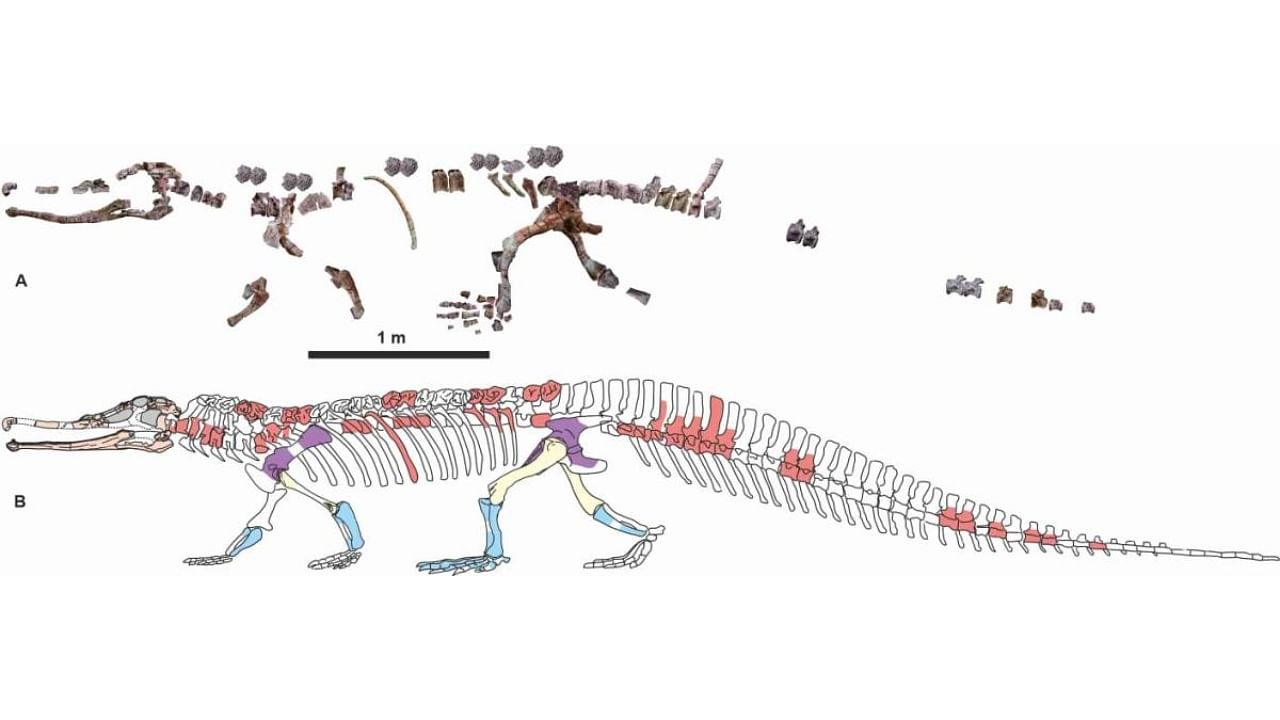
Indian palaeontologists have unearthed one of the biggest fossils of an extinct reptilian creature that was the oldest ancestor of modern-day crocodiles but disappeared from the Earth nearly 200 million years ago.
The fossil discovered in Madhya Pradesh is a new genus and species in the family of phytosaurs, semi-aquatic creatures that migrated along the coastline of the prehistoric Tethys Ocean in the baby planet and inhabited multiple continents long before the Jurassic era reign of the dinosaurs.
The fossil recovered from a rocky geological terrain known as Tiki formation represents a type of phytosaurs unique to India and its presence next to juvenile fossils provides the first evidence of parental care behaviour among phytosaurs.
Also Read | Treasured 'shit': Fossilised dung can offer unusual insight into ancient animal behaviour
“Phytosaurs and crocodiles had a common ancestor. Phytosaur is the most primitive creature in the family while the crocodile is the most modern one. The fossil that we discovered has a length of 8.4 mt and it is one of the biggest in the world,” fossil hunter Debajit Datta, formerly with Indian Institute of Technology, Kharagpur told DH.
Datta and his supervisor Sanghamitra Ray from IIT Kharagpur, collected more than 1,000 fossil bones from the site in Rewa basin.
A careful analysis spanning over five years resulted not only in the identification of the species as a unique one, but also the discovery of the creature’s parental behaviour as fossils of 21 animals – many juveniles and a few adults – were spotted in the same spot.
Named Colossosuchus techniensis, the ancient predator had several unique features in its skull, teeth, jawline and nasal areas. Fossils of the same creature have also been found in another site in Pranhita-Godavari basin in Telangana. The species has been named after IIT Kharagpur.
Most of the ‘croc-line’ ancestors don’t look much like crocodiles, but phytosaurs were a definite exception. With short legs, wide, heavy bodies with rows of armoured scales, long tails, and long toothy snouts, they looked very similar to living crocs.
The name, however, was a misnomer as phytosaur means ‘plant lizard’. Such a mistake crept into the scientific lexicon because the first phytosaur fossil discovered was not very well preserved and the scientist who found it thought that mud casts of the tooth sockets were actually the teeth.
Since those supposed teeth were blunt and rounded, he thought the animal must be a plant eater, even though the phytosaurs in reality had sharp, cone-shaped teeth like crocodiles, and they ate fish and other animals.
Most of the primitive phytosaurs disappeared between 228-225 million years ago. Those who survived that three million year long extinction phase, also vanished just about 200 million years ago when the era of dinosaurs dawned.
Datta who currently works at the Department of Earth Sciences in IIT Roorkee, said their study also demonstrated how the phytosaurs migrated following coastal routes and evolved further in the Indian subcontinent. The fossils found in India had the same unique signatures suggesting one particular group of phytosaurs was present in the subcontinent.
The study has been published in the Papers of Palaeontology.
